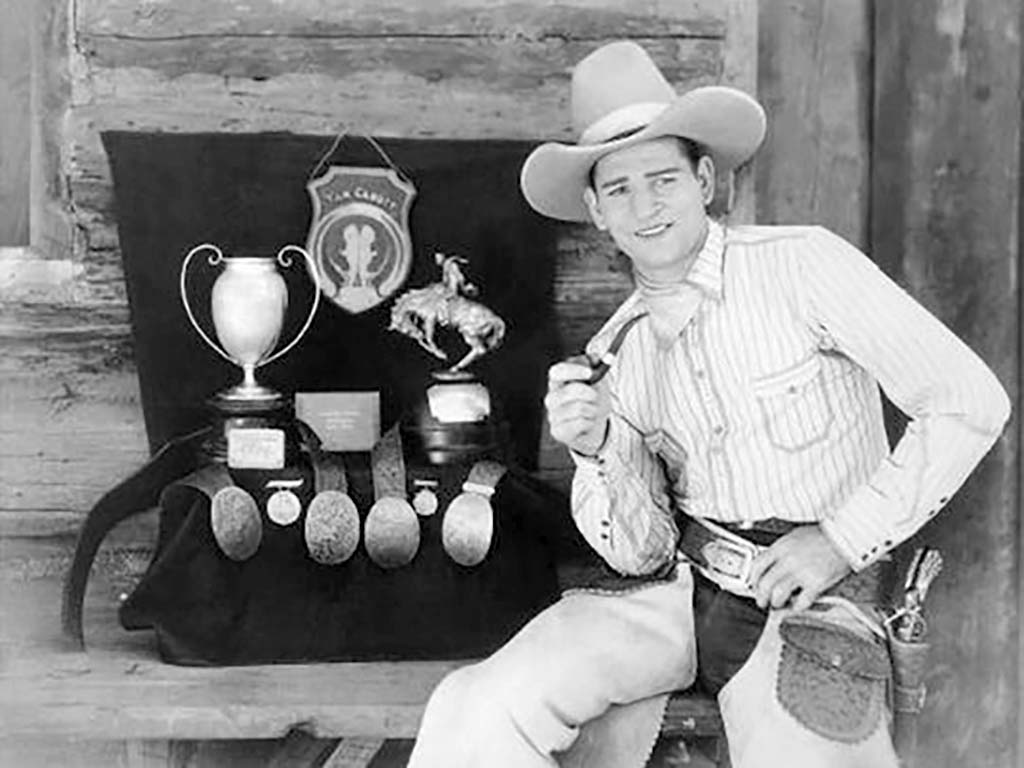Yakima Canutt grew up a rodeo hand in Oregon and Washington, breaking broncos and wrestling steer in what turned out to be the dying days of the Old West.
During the early years of Hollywood in the 1920s, with its insatiable appetite for westerns, Canutt found work as a stunt man and occasional actor; by 1928 he’d featured in 48 films. He became famous for his work with the actor John Wayne, who apparently modelled his on-screen persona on Canutt’s drawling speech and hip-rolling gait.

Concerned with how many stuntmen were dying or suffering horrific injuries, Canutt started to develop new techniques for stunts, including the “L stirrup” that allowed stunt riders to fall off their horses without getting their legs tangled.
He was also concerned with cruelty to animals. It’s difficult to overstate just how callous early Hollywood was in this regard: in the 1939 film Jesse James, the filmmakers pushed a live horse off a cliff for a stunt, killing it in the process.
Canutt’s most famous invention was the “running W”, a way of tripping a horse with a hidden wire and sending its rider flying dramatically from the saddle that was much safer than the techniques that had been used before. (It’s all relative, of course; the running W could still stun or injure horses, and was itself eventually banned by the American Humane Association.)
Perhaps the best summary of Canutt’s influence in Hollywood are two adaptations of Ben Hur, the chariot-racing epic. In the 1925 version, made before Canutt’s innovations, over 100 horses were injured and at least 5 were killed during the filming of the chariot race scenes. In the 1959 version, on which Canutt worked as a stunt coordinator, not a single horse was injured.